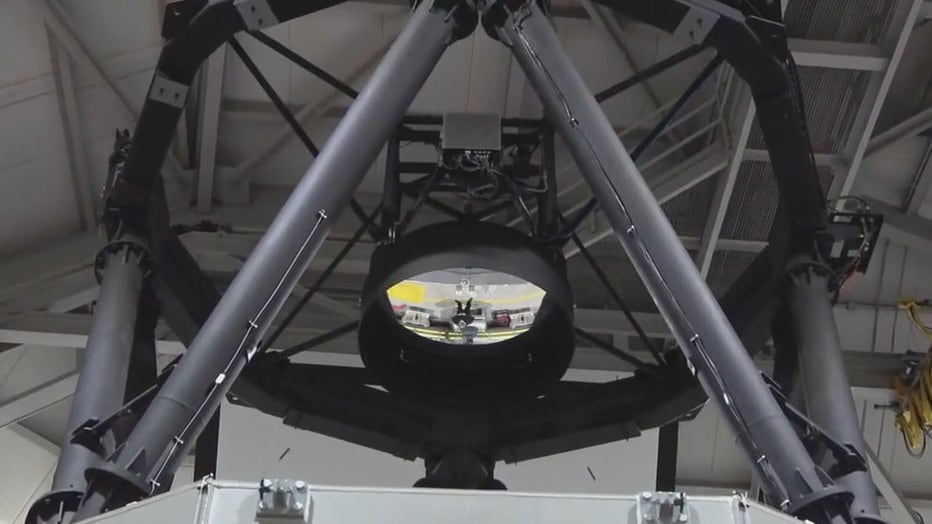The Discovery Telescope, operated by the Lowell Observatory, uncovers mysteries of the universe
Discovery Telescope unlocking secrets of the universe
The Discovery Telescope, operated by workers at the Lowell Observatory, is instrumental in tracking asteroids, eco-planets and supernovas. FOX 10's Steve Nielsen has more.
HAPPY JACK, Ariz. - Tucked away in Happy Jack a very important telescope is hard at work nearly every night, not just on science but on keeping us safe from asteroids, too.
When this telescope first started taking pictures of the night sky in 2012, it was renowned for its versatility.
It proved that point in 2025 as it joined the front lines of planetary defense.
What we know:
Beyond a half-mile dirt road up a hill in Happy Jack sits a structure hard to miss. The building, with angles reflecting sunlight throughout the day, inside is one of the largest telescopes in the country.
"They call us the Swiss Army knife of telescopes," said Jake Tiegs who works on the Lowell Discovery Telescope.
It's the Lowell Observatory's largest telescope and is actually 50 miles to the south in Happy Jack.
Tiegs is one of the mechanics that helps keep it operational.
"They have about a mile of power cords, communication cords, fiber optics," said Tiegs.
From the only climate-controlled room in the building, he monitors the weather conditions to make sure the doors can be open.
"If the wind gusts go too high, we close it up. It’s a wind closure, we call it," he said.
Once they are closed, he tracks which astronomers across the world have access to point it and makes sure the 6,000-pound mirror is perfectly in shape.

Dig deeper:
Jake opened the flaps on the mirror and lowered it down for us to take a look.
Under the telescope, you can see the thin 4.3 meter, 14-foot diameter mirror inside and the mechanisms that constantly shift and adjust to make sure the telescope doesn’t move even the slightest.
"We’re talking in the neighborhood of tens of thousands of an inch or thousands of an inch," said Tiegs about the shifting mechanisms.
The telescope is actually separate from the building to make sure it doesn’t shake and rotates on a 14-foot diameter drive gear.
"It is one piece of metal lithed in Italy, the only place that has a lithe big enough, apparently," said Tiegs.
Why you should care:
What makes the Discovery Telescope unique are the mechanisms on its backside.
In just five minutes, they can use a different tool to measure something else in the night sky on other telescopes that can take a day to swap that out.
"No one is mass-producing instruments like that. Each instrument you see on a research telescope is bespoke, one of a kind, usually a prototype," said Tiegs.
It was helpful as the telescope switched from searching for eco-planets and supernovas to asteroid YR 2024 and monitoring its path.
Featured
2024 YR4: What to know about the asteroid that could hit Earth in the future
Scientists across the world, including some in Arizona, are keeping an eye on an asteroid that has a very slim chance of hitting earth in the near future. Here's what to know about asteroid 2024 YR4.
The Discovery Telescope gave key data which lowered the chances of an impact with earth in the next decade substantially, all thanks to its versatility.
After showing it off… it’s time to cover the mirrors, tilt it back up and ready it for the next adventure, uncovering the mysteries of the universe from right here in Arizona.
One of the reasons the spot in Happy Jack was picked for telescope is that weather is cooperative more than 300 nights a year.


